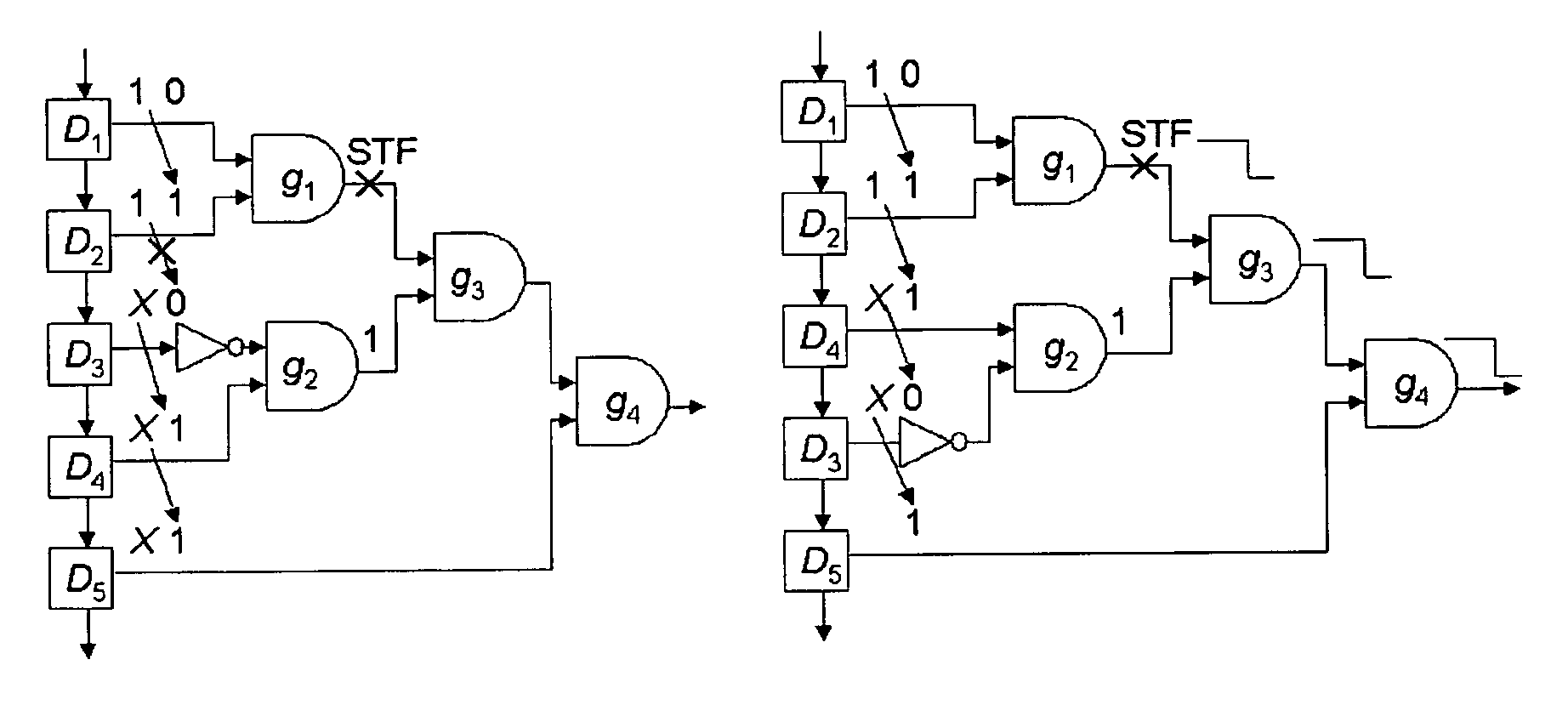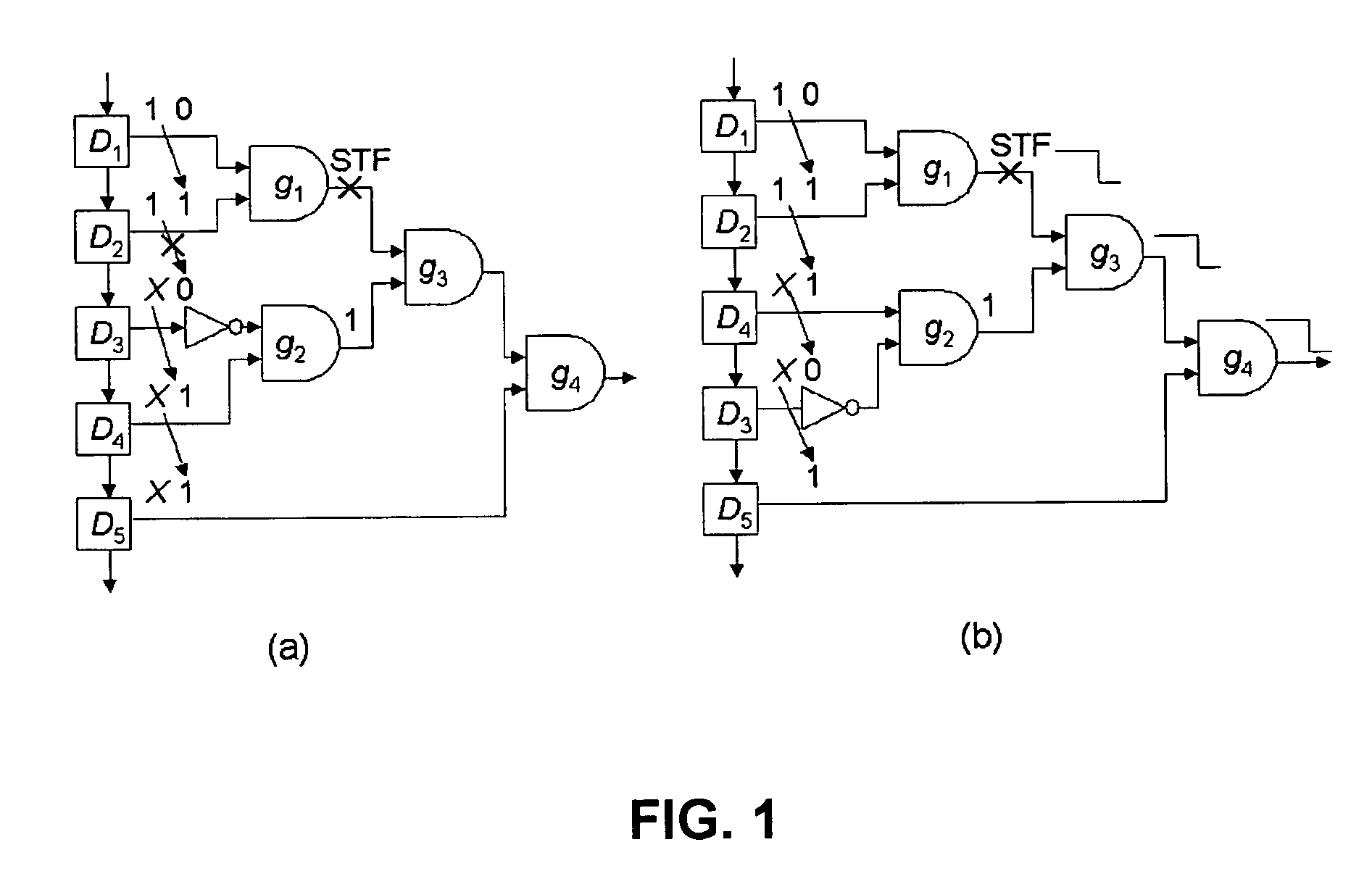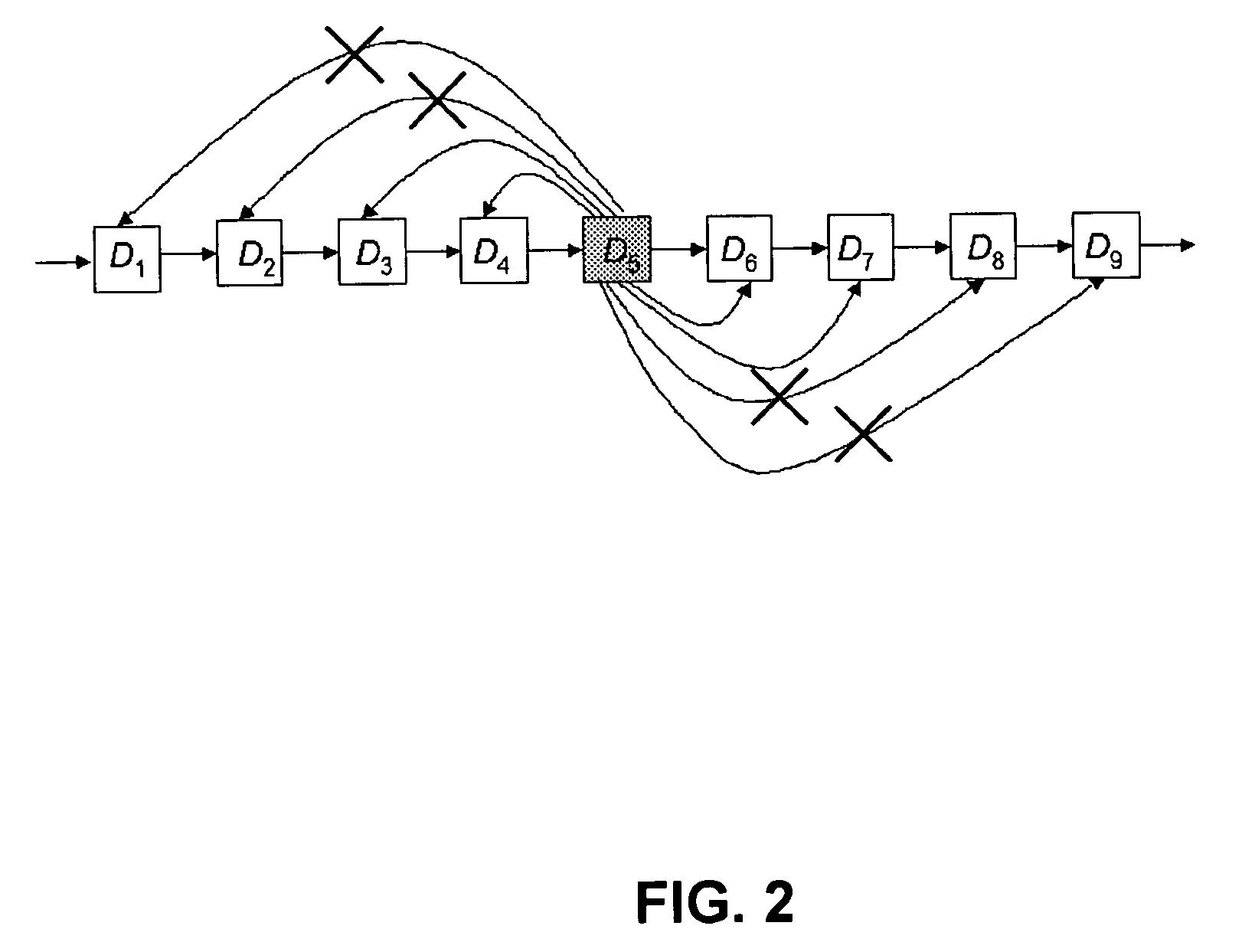Restricted scan reordering technique to enhance delay fault coverage
a delay fault and scan reordering technology, applied in the field oflogic delay testing, can solve the problems of correlation between the pair and the device/or wiring propagation delay exceeding specified limits, the logic to malfunction at desired clock rate, and the correlation between the pair may create untestable delay faults, etc., to achieve the effect of increasing the chip area, enhancing the delay fault coverage, and avoiding increasing routing overhead
- Summary
- Abstract
- Description
- Claims
- Application Information
AI Technical Summary
Benefits of technology
Problems solved by technology
Method used
Image
Examples
Embodiment Construction
[0016] The number of distinct pattern pairs that can be applied using the skewed load approach is 2(2n−1) compared to 2n(2n−1) that can be applied by enhanced scan, where n is the number of scan inputs of the circuit under test. Hence, some transition delay faults that are detectable in an enhanced scan environment are undetectable when the skewed-load approach is used due to shift dependency. The faults that are undetectable by using the skewed-load approach but detectable under an enhanced scan environment are referred to herein as “shift dependency undetectable faults.”
[0017]FIG. 1A shows an example of a shift dependency undetectable fault. The STF fault in the circuit shown in FIG. 1A is untestable under a standard scan environment when the skewed-load approach is used. In order to initialize the STF fault, both D1 and D2 should be assigned 1's at an initialization cycle. The 1 at D2 at the initialization cycle shifts to D3 at the next cycle (launch cycle). However, in order to ...
PUM
 Login to View More
Login to View More Abstract
Description
Claims
Application Information
 Login to View More
Login to View More - R&D
- Intellectual Property
- Life Sciences
- Materials
- Tech Scout
- Unparalleled Data Quality
- Higher Quality Content
- 60% Fewer Hallucinations
Browse by: Latest US Patents, China's latest patents, Technical Efficacy Thesaurus, Application Domain, Technology Topic, Popular Technical Reports.
© 2025 PatSnap. All rights reserved.Legal|Privacy policy|Modern Slavery Act Transparency Statement|Sitemap|About US| Contact US: help@patsnap.com



